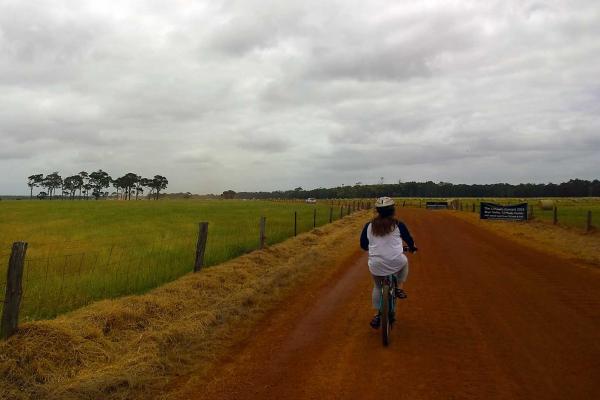Of all possessions in life, I believe few are as signature to one's identity as a car. I have owned the same car since I was 16 years old: a ‘91 Jeep Cherokee that my parents gave me when I learned to drive (or was still learning, rather). That car has been back and forth on countless road trips to new adventures and work destinations.
When deciding to move to Costa Rica, my husband and I were immediately set on bringing the car that our two-year-old son grew up riding. Our car, Coco, would be a piece of home away from the home he always knew.
This is story, however, is about the journey of a different car: a '97 Toyota Forerunner named Coco (Spanish for "coconut"). When deciding to move to Costa Rica, my husband and I were immediately set on bringing the car that our two-year-old son grew up riding. Coco would be a piece of home away from the home he always knew. It was also going to be a cheap, reliable car in a country where that is a rarity, and a vehicle that both my husband and I enjoy driving.
So, it was decided—we were bringing a car to Costa Rica. But what would that look like?
Planning the car's journey
We knew that getting anything to Costa Rica was a challenge. We don’t even ship normal packages to and from this country given possible delays and the uncertainty of arrival. With this in mind, we prepared to figure out the logistics of Coco’s mega journey.
There were three main steps to consider:
1) Getting the car to the coast
Being in the landlocked state of Montana, we were faced with a second decision: Pacific or Atlantic coast? There are several possible locations for shipping cars from the United States to Costa Rica, including Miami, Los Angeles, and Portland. We landed on New Jersey, given a helpful contact that would assist with the process.
A major task was orchestrating how Coco would complete this 3,500 kilometre trip from our home. We had two main options: driving it there ourselves or paying to load it on a carrier. Our New Jersey connection made us grateful once again to live in a tourist destination—he decided to make the flight to our state, and drive our car to back home to the coast. Check—one step done.
2) Arrange shipment and fees
As for shipping vehicles to Costa Rica, there are also two main options. Pay a company to handle the process, or do it yourself. Given our new connection, we had a third option of working with knowledgeable contact. We paid for space within a shipping container that would have returned to Costa Rica empty after bringing bananas and pineapples to our not-so-tropic land. We also paid commission to the handler and insurance for an inventory of goods inside the vehicle. If items aren’t on the list, they’re not crossing customs (we actually had a Lego owl figure ripped from our dashboard).
Once in Costa Rica, all imports are taxed. Vehicles have a hefty one, with a higher percentage paid on older models. That’s one reason cars are so expensive here, and have good re-sale value. I suggest running a quick calculation on the “blue book” value, plus import taxes, to help determine if it makes financial sense to ship a car, or just buy one upon arrival. We determined Coco is the former, and a desirable car to have in Costa Rica.
Other unsuspected fees include the days a vehicle spends in customs awaiting its owner. Keep this in mind and be responsive to accessing your car.
3) Preparing for the car's arrival
After landing in Costa Rica, all cars are inspected and then sent to customs. There, they stay for several weeks until approved for “official entry.” Customs calls owners to notify them of this approval, so be ready to answer.
When out of customs, cars require annual emissions testing and registration fees that can only be regularly done in more populated areas.
Sending the car off
After inevitable delays coordinating with our Costa Rican friend’s brother (yes, that was our connection in New Jersey), we prepared to say “hasta luego” to our car. This genuine tico was the talkative type and well-versed in shipping items to Costa Rica. He arrived at our house with his wife, and we were instantly anxious to be sending the car on its way.
Enjoying a dose of their company, we eventually loaded the car up to the max and sent them on their way. With a few detours—from Yellowstone to Chicago—the car and Costa Rican couple safely arrived in New Jersey. One leg of the journey successfully completed. Check.
Waiting for Coco to arrive
The waiting process on the Costa Rican-side was, in a word, absurd. The situation was made worse by delays in the drive from Montana to New Jersey, delays in the shipping process, and a workers’ strike in Puerto Limon—just our luck.
We anticipated a four-to-five week process that ultimately extended into one twice as long (in my experience, double your expected time for anything here in Costa Rica, really). This, unfortunately, made our first month in Costa Rica more sedentary than we would have liked. Although, I am now appreciating the many neighbourhood walks with our son and lazy brunches with his great-grandma.
Unknowingly, we opted for an entry permit that gave us driving permission for one day from when it left customs. We were shocked. Another option is to enter with a temporary import permit that gives you three months to complete the process. We had to move to our new home immediately, and then cross our fingers we weren’t caught driving without licence plates while managing to acquire them.
Though I am incredibly grateful that it worked out, part of me wonders what would have been the experience of using a company to organize the whole shuttle, shipment, and import, rather than our own connection. We will never know, I guess. Surely more expensive, but perhaps that would have been worth the time spent coordinating the journey and anticipating the arrival.
Still, another adventure for the books: Coco made it, and the clan is reunited for this Costa Rican journey to come.
Add this article to your reading list




